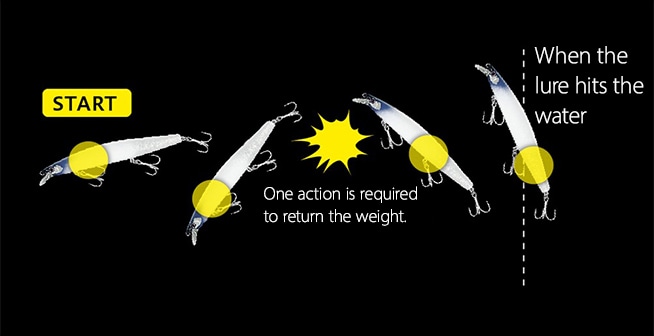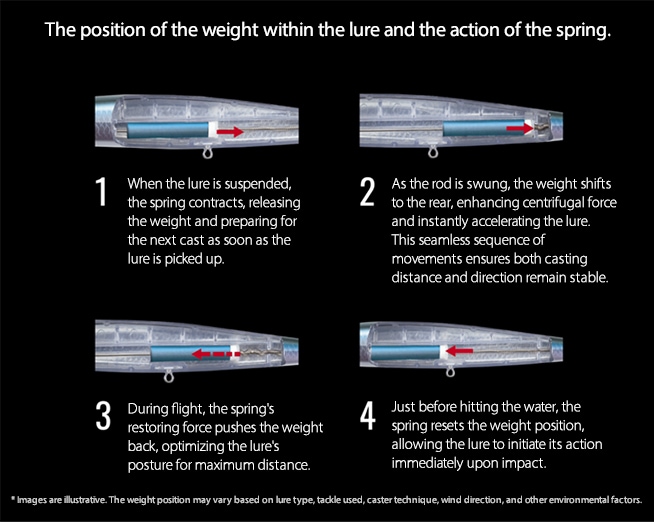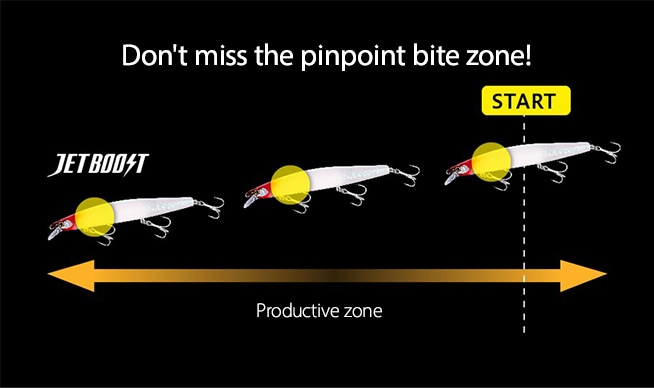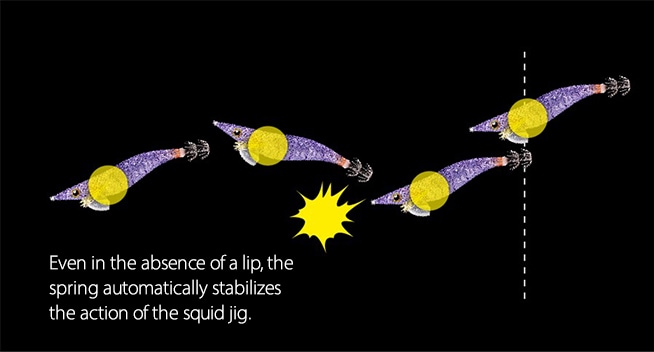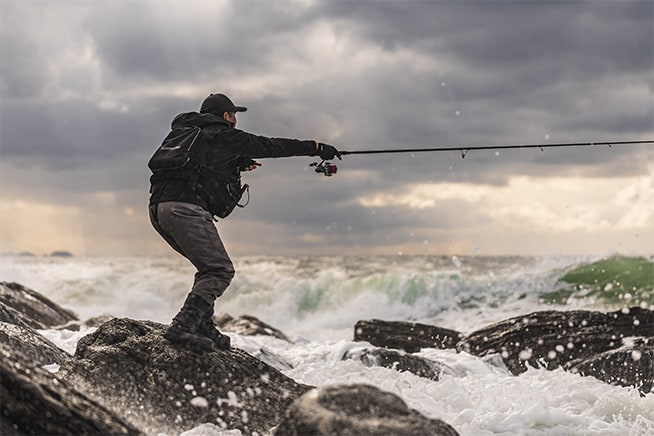Many plugs are designed with a center of gravity shifting mechanism to enhance casting distance. During casting, the weight shifts to the rear of the lure, enabling longer casts. As you retrieve, the weight moves back to the front, allowing the lure to swim naturally.
However, when the lure hits the water with the weight positioned at the rear, it can’t start moving immediately, even if you begin retrieving right away. Minnows and other lures with lips (protrusions that cut through the water) naturally lower their heads and shift their weights forward upon retrieval to initiate swimming; however, this action is slightly delayed.
Sinking pencils, squid jigs, and other lures without lips, as well as those with heavy moving weights, can exhibit unnatural swimming action when their posture shifts since the weights do not return to the front. This can limit the effectiveness of long casting distances and may alert fish, reducing your chances of a successful catch.
Many plugs are designed with a center of gravity shifting mechanism to enhance casting distance. During casting, the weight shifts to the rear of the lure, enabling longer casts. As you retrieve, the weight moves back to the front, allowing the lure to swim naturally.
However, when the lure hits the water with the weight positioned at the rear, it can’t start moving immediately, even if you begin retrieving right away. Minnows and other lures with lips (protrusions that cut through the water) naturally lower their heads and shift their weights forward upon retrieval to initiate swimming; however, this action is slightly delayed.
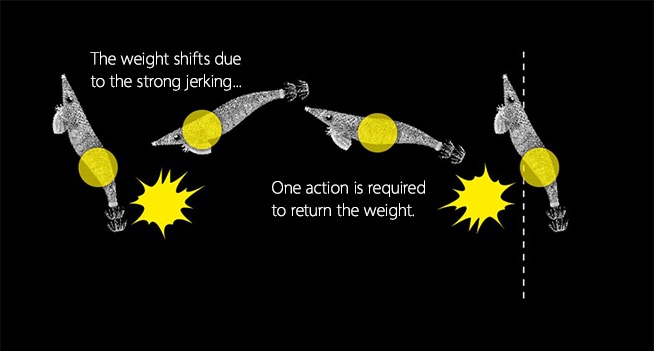
Sinking pencils, squid jigs, and other lures without lips, as well as those with heavy moving weights, can exhibit unnatural swimming action when their posture shifts since the weights do not return to the front. This can limit the effectiveness of long casting distances and may alert fish, reducing your chances of a successful catch.


